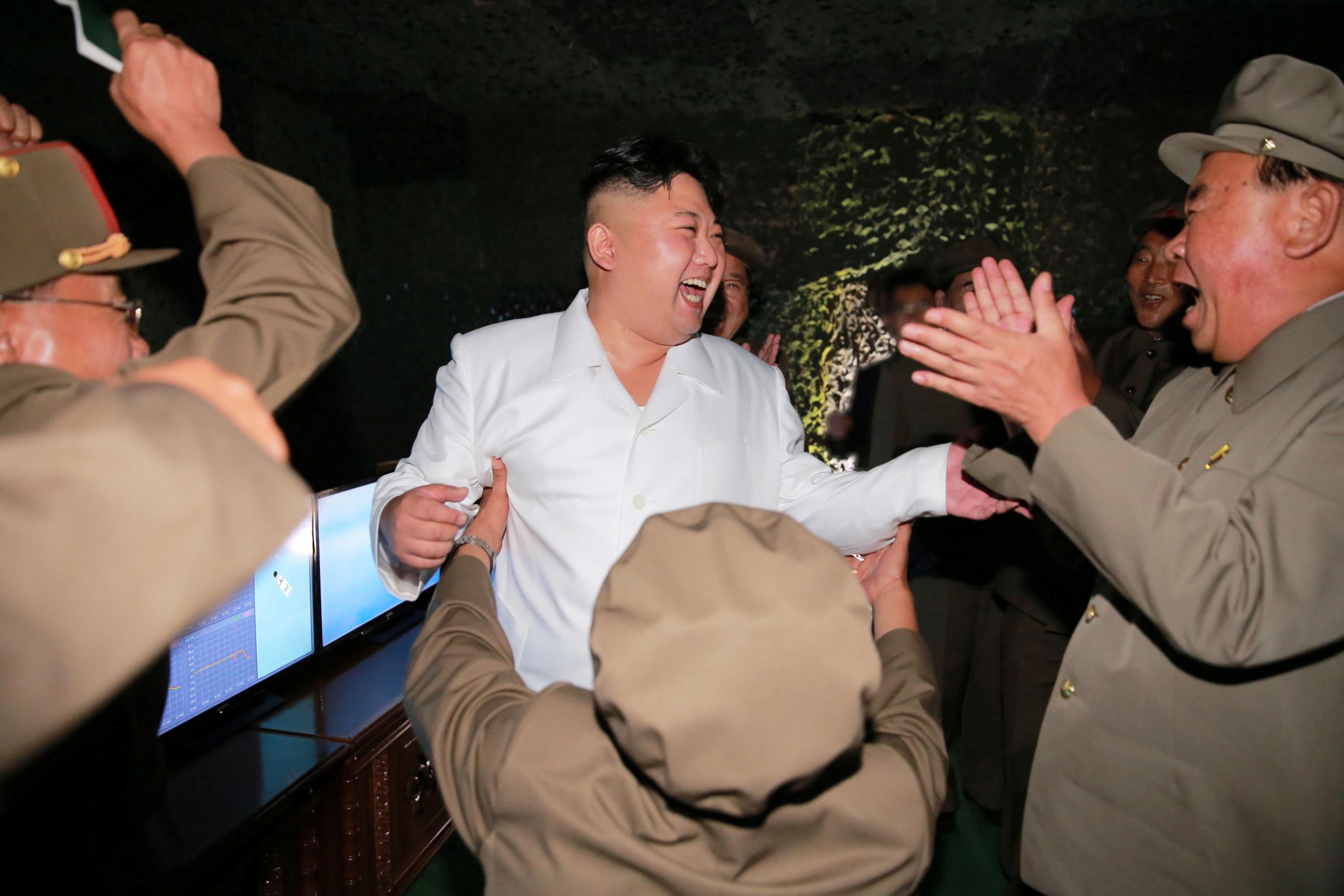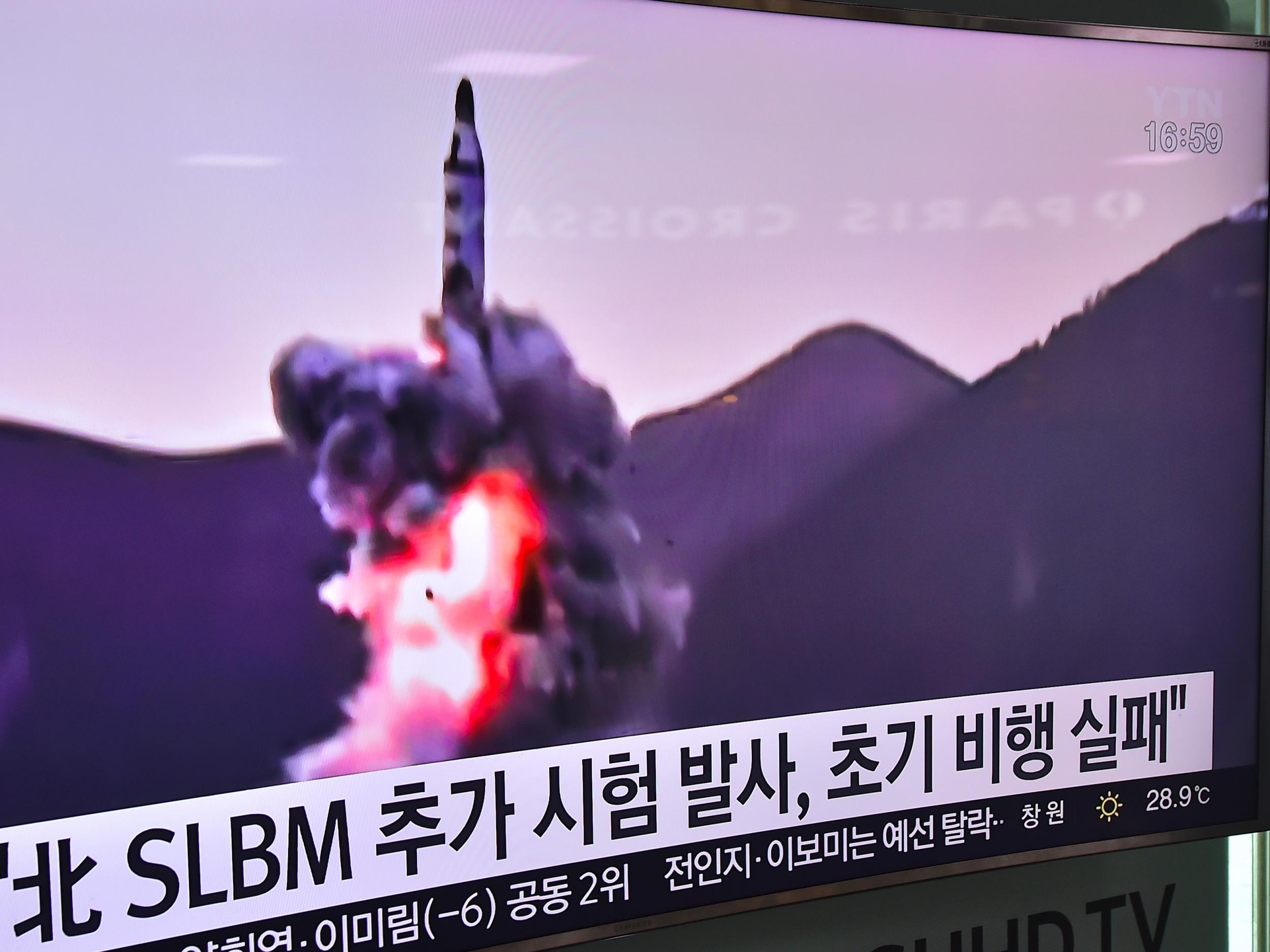How worried should we be about North Korea’s nuclear test?
The Big Question: Kim Jong-un's military says it can mount nuclear warheads on missiles to strike its enemies, but can the claims be trusted?

Why are we asking this now?
North Korea claims to have conducted its largest ever nuclear test, generating an explosion that triggered an artificial magnitude 5 earthquake.
State media claimed the “successful” experiment, carried out at a secretive underground facility, saw a nuclear warhead detonated.
The Korean Central News Agency (KCNA) reported that the weapon could be “mounted on strategic ballistic rockets”, allowing Kim Jong-un’s military to target enemies around the world.
"The standardisation of the nuclear warhead will enable the DPRK to produce at will and as many as it wants a variety of smaller, lighter and diversified nuclear warheads of higher strike power,” it continued.
“The nuclear warhead explosion test is a demonstration of the toughest will of the Workers’ Party of Korea and the Korean people to get themselves always ready to retaliate against the enemies [including] the US-led hostile forces.”
Although it was impossible to verify the totalitarian regime’s claims, analysts at South Korea's weather agency said the explosive yield would have been 10 to 12 kilotons – almost as powerful as the 15-kiloton atomic bomb the US dropped on Hiroshima in 1945.
The US Geological Survey’s analysis said it could be even stronger, nearing the strength of the even more devastating blast that destroyed Nagasaki.
The explosion was the largest recorded in North Korea following previous tests in January, 2013, 2009 and 2006.

How has the world reacted?
Global leaders have united in their condemnation of the “provocation”, which came just days after North Korea tested several ballistic missiles during the G20 summit.
The United Nations Security Council called an emergency meeting to discuss the international response on Friday afternoon, while Boris Johnson, the Foreign Secretary, promised a “robust” reaction.
China, the closest ally of isolated North Korea, said it “resolutely opposes” the test and would launch a diplomatic protest, calling on Kim’s regime to stop any behaviour that “worsens the situation”.
It was one of several countries including the US and Russia voicing their consternation, alongside the European Union and Nato.
The head of the International Atomic Energy Agency said that if confirmed, the test was in clear violation of numerous UN Security Council resolutions and in complete disregard of the repeated demands of the international community.
The Comprehensive Nuclear-Test-Ban Treaty Organisation also said it “constitutes yet another breach of the universally accepted norm against nuclear testing; a norm that has been respected by 183 countries since 1996”.

Can North Korea’s claims be trusted?
Shannon Kile, a nuclear specialist at the Stockholm International Peace Research Institute (SIPRI) said the test had a symbolic value coming on the 68th anniversary of North Korea’s foundation.
But he told The Independent the available data suggest more explosive power than previous experiments and a possible progression from “rudimentary” weapons.
“I’m inclined to believe [the claims],” Mr Kile said. “I think they are a very long way from having a long-range ballistic missile that can carry a nuclear warhead but they may have medium-range ballistic missiles that could take them.”
On Monday, North Korea launched three Rodong missiles that travelled more than 300 miles to land in the Sea of Japan, suggesting the medium-range weapons could be intended to carry nuclear warheads.
Mr Kile said that would put Japan, South Korea and possibly US military bases in Guam in range of a nuclear strike, with the missiles capable of travelling up to 930 miles depending on the load.
“These are mobile missiles so it makes it particularly dangerous for South Korea and Japan because if they wanted to carry out a pre-emptive strike they would not be easy to find,” he added.
Dr John Nilsson-Wright, head of the Asia Programme at Chatham House, said North Korea was previously thought to be two to three years away from miniaturising a weapon for long-range missiles.
“This is a way of bolstering Kim Jong-un’s standing in the country,” he told The Independent.
“I think we have seen missile testing, submarine launches and now this – it all adds up to a pretty clear intention from the North that they are going to keep on going.”

Has North Korea really miniaturised a nuclear warhead?
While North Korea is known to have a small stockpile of nuclear warheads, experts have been divided about its ability to mount them on a working missile delivery system that could allow a long-range strike.
If “miniaturisation” has been achieved, it will raise serious concern over the capability of the totalitarian government to realise years of threats aimed at the US and other enemies.
There is little scientific evidence to verify that North Korea has perfected the science of creating a nuclear bomb small enough to fit on a ballistic missile and withstand the physics of atmospheric re-entry.
In April, a South Korean official said the North had accomplished miniaturisation of a warhead, although the US Department of Defence did not share the assessment.
The previous month, Kim Jong-un was shown meeting nuclear scientists, with photos published by state media displaying a small, ball-like device that KCNA claimed was a miniaturised nuclear warhead.
He was also photographed inspecting a missile nosecone, although analysts said the weapon shown could be described more accurately as “compact”, rather than “miniaturised”, suggesting it could not fit on an inter-continental ballistic missile.
No images immediately emerged from Friday’s test.
So should we be worried?
The experts’ view seems to be in the affirmative, with potential weapons development combining with Kim Jong-un’s threatening and confrontational rhetoric, and increasing regional tensions around US and South Korean military deployments.
“What this has demonstrated is that the commitment of the North to develop its nuclear capabilities is as strong as ever – and that is why we should be worried,” Dr Nilsson-Wright said.
“We have to worry about the risk of a conflict…the options for the international community are getting narrower and narrower, and more and more unattractive.”
The North Korean government is also considered highly volatile, operating outside of international law and alliances after decades of dictatorships that have seen its population indoctrinated with the Kim dynasty’s totalitarian ideology.
State media recently threatened to reduce Seoul and Washington to a “heap of ashes” and any weapons giving North Korea the ability to carry out the threat are justifiably a cause for alarm.
Mr Kile, who has visited the secretive state of several occasions, said its government should not be considered “jokers”.
“They are not crazy but they start from different assumptions about how the world works,” he added.
“I’m afraid that something may spark a confrontation and things can get out of control easily because of the nuclear risks.
“Tensions are mounting and I don’t see any signs of de-escalating what has become a very dangerous situation.”

What can be done to stop North Korea?
The isolated country has been subjected to decades of sanctions, with the toughest ever measures agreed by the UN Security Council in March, but North Korea has continued its nuclear programme seemingly unabated.
“Sanctions clearly have not acted as a deterrent so far,” Dr Nilsson-Wright said.
“The wildcard is China, which is becoming even more irritated with North Korea and is no friend of Kim Jong-un.”
Mr Kile said restrictions on the import of aviation fuel seemed to be having an affect but that the regime was “good at getting around” attempted curbs.
He suggested that rather than demanding nuclear disarmament in North Korea, international bodies offer temporary compromises such as a moratorium on testing in exchange for the loosening of sanctions.
“Denuclearisation is a long-term goal but it’s a distant one and we now need to think about what steps can be taken now,” Mr Kile added. “They are not going to give the nuclear weapons up.”
Join our commenting forum
Join thought-provoking conversations, follow other Independent readers and see their replies
Comments
Bookmark popover
Removed from bookmarks